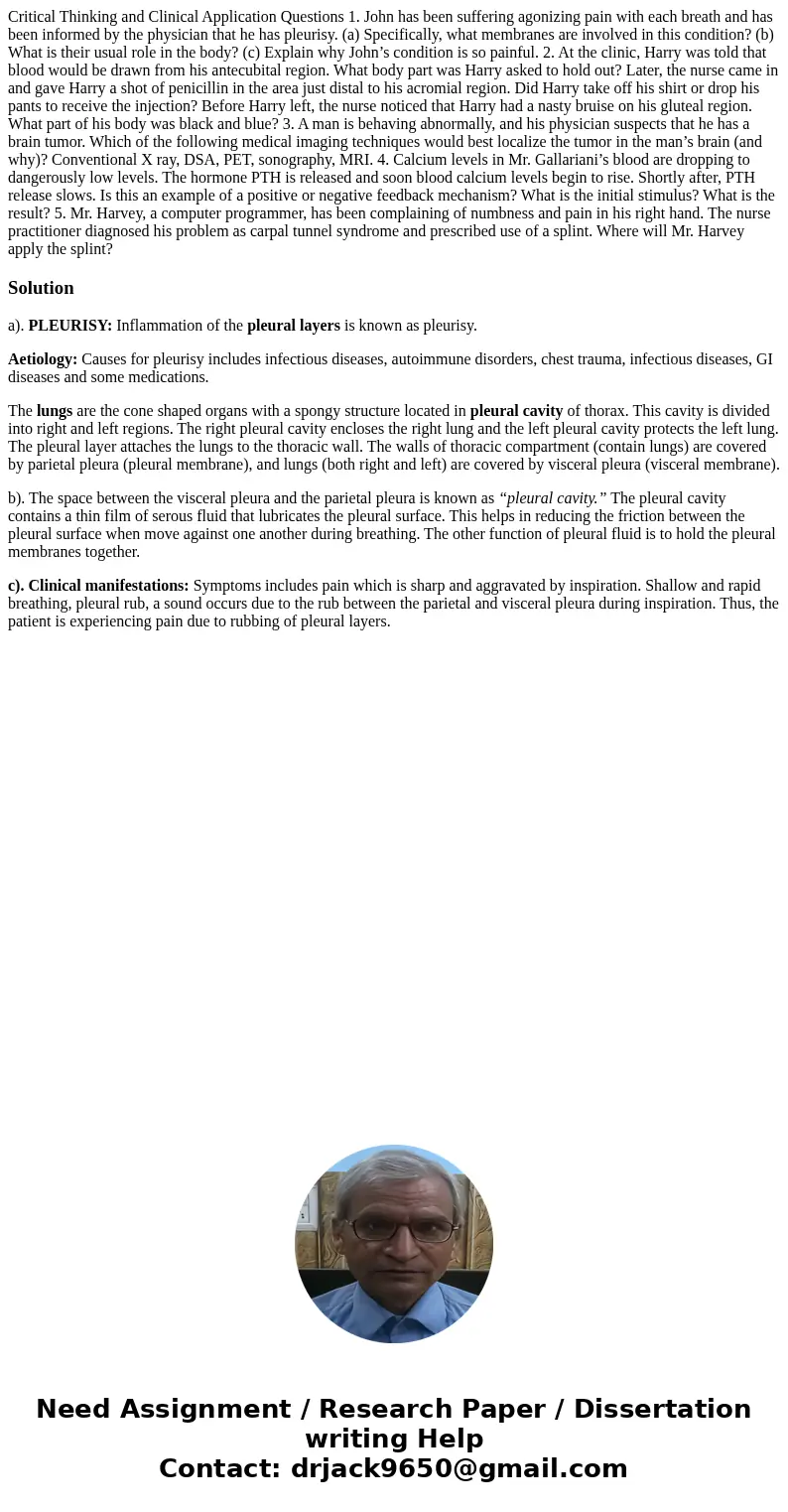Critical Thinking and Clinical Application Questions 1 John
Critical Thinking and Clinical Application Questions 1. John has been suffering agonizing pain with each breath and has been informed by the physician that he has pleurisy. (a) Specifically, what membranes are involved in this condition? (b) What is their usual role in the body? (c) Explain why John’s condition is so painful. 2. At the clinic, Harry was told that blood would be drawn from his antecubital region. What body part was Harry asked to hold out? Later, the nurse came in and gave Harry a shot of penicillin in the area just distal to his acromial region. Did Harry take off his shirt or drop his pants to receive the injection? Before Harry left, the nurse noticed that Harry had a nasty bruise on his gluteal region. What part of his body was black and blue? 3. A man is behaving abnormally, and his physician suspects that he has a brain tumor. Which of the following medical imaging techniques would best localize the tumor in the man’s brain (and why)? Conventional X ray, DSA, PET, sonography, MRI. 4. Calcium levels in Mr. Gallariani’s blood are dropping to dangerously low levels. The hormone PTH is released and soon blood calcium levels begin to rise. Shortly after, PTH release slows. Is this an example of a positive or negative feedback mechanism? What is the initial stimulus? What is the result? 5. Mr. Harvey, a computer programmer, has been complaining of numbness and pain in his right hand. The nurse practitioner diagnosed his problem as carpal tunnel syndrome and prescribed use of a splint. Where will Mr. Harvey apply the splint?
Solution
a). PLEURISY: Inflammation of the pleural layers is known as pleurisy.
Aetiology: Causes for pleurisy includes infectious diseases, autoimmune disorders, chest trauma, infectious diseases, GI diseases and some medications.
The lungs are the cone shaped organs with a spongy structure located in pleural cavity of thorax. This cavity is divided into right and left regions. The right pleural cavity encloses the right lung and the left pleural cavity protects the left lung. The pleural layer attaches the lungs to the thoracic wall. The walls of thoracic compartment (contain lungs) are covered by parietal pleura (pleural membrane), and lungs (both right and left) are covered by visceral pleura (visceral membrane).
b). The space between the visceral pleura and the parietal pleura is known as “pleural cavity.” The pleural cavity contains a thin film of serous fluid that lubricates the pleural surface. This helps in reducing the friction between the pleural surface when move against one another during breathing. The other function of pleural fluid is to hold the pleural membranes together.
c). Clinical manifestations: Symptoms includes pain which is sharp and aggravated by inspiration. Shallow and rapid breathing, pleural rub, a sound occurs due to the rub between the parietal and visceral pleura during inspiration. Thus, the patient is experiencing pain due to rubbing of pleural layers.

 Homework Sourse
Homework Sourse